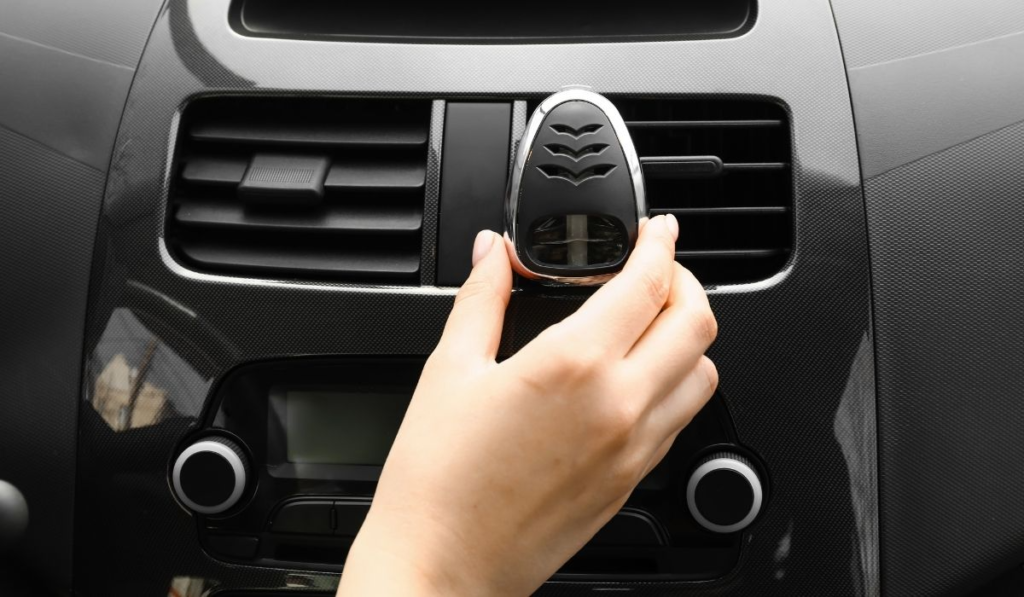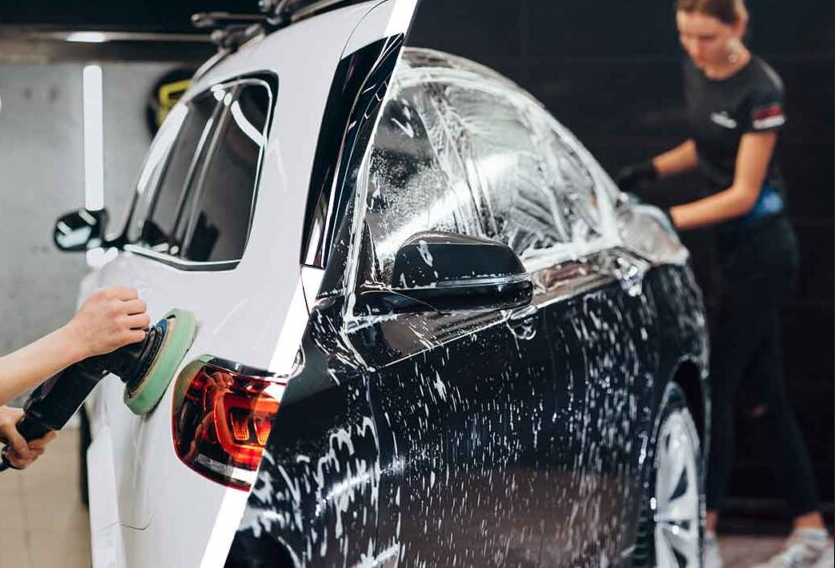
The satisfaction that comes with a flawlessly detailed car is known to both car enthusiasts and detailers. Achieving that flawless finish for car paint detailing requires skill, patience, and attention to detail. But even the most skilled experts can make common mistakes in car paint detailing. We will go over 20 typical mistakes to avoid in this extensive guide to make sure your next detailing project has a finish that would look great in a showroom.
1. Detailed work in full sunlight for car paint detailing
Table of Contents
ToggleUnder intense sunlight, detailing your car can cause some problems:
- Too much drying occurs in the car, leaving water stains.
- Chemicals may cause damage to the paint as it dries.
- Interior surfaces may get too hot to handle.
Tip: When the sun is not too strong, wash your car in the early morning or late afternoon. Choose a shaded spot if you can, or get a canopy, for all-weather detailing.
2. Selecting Incorrect Car Wash Soap
It is important to select the proper car wash soap. Steer clear of strong dish soaps and household detergents as they can damage paint by removing protective layers.
Tip: To preserve the integrity of your paint, use pH-balanced car wash soaps designed specifically for automobiles.
3. Washing with Just One Bucket
Cross-contamination may occur if one bucket is used for both washing and rinsing tasks. Dirt and debris from the wash process end up back on your sponge or mitt.
Tip: Use a two-bucket system—one for soapy water and another for clean rinse water—to prevent scratches.
4. Washing the Car with a Sponge
Scratches and swirl marks can result from dirt particles being trapped by sponges. They are not as plush as they should be for safe washing.
Tip: Purchase premium lambswool or microfiber cleaning mitts for delicate tasks.
5. Organizing From Bottom to Top
Beginning at the bottom may cause dirt to be drawn upward, making scratches more likely.
Tip: A helpful hint is to start at the top and work your way down to prevent introducing impurities into the paint.
6. Using the Same Microfiber Towel for Different Purposes
Using a single microfiber towel for various tasks (drying, waxing, etc.) can transfer contaminants and compromise results.
Tip: Label towels for specific purposes (e.g., one for drying, another for waxing) to prevent cross-contamination.
7. Circular Motions While Cleaning
Swirl marks can result from washing in circular motions.
Tip: To reduce swirls, draw straight lines or move back and forth.
8. Selecting the Cloth from the Floor
You introduce grit and dirt when you let your towel fall to the ground.
Tip: Keep towels off the ground and use a clean surface.
9. Finishing Up with Wheel and Tire Cleaning
Dust from previously cleaned paint can splatter onto freshly painted wheels and tires.
Tip: Focus on the tires and wheels first, then the body.
10. Using the Car to Get It Dry
Water stains and uneven drying can result from driving a wet vehicle.
Tip: Use a microfiber drying towel as a gentle way to dab away any extra water.
11. Ignoring the Decontamination Process
It is imperative to eliminate impurities such as tar, tree sap, and industrial fallout before polishing or waxing. Skipping this step can lead to poor results and compromised paint protection.
Tip: One piece of advice is to completely clean the paint surface with a clay bar or iron fallout remover.
12. Ignoring the Interior
Detailing extends beyond appearances. Disgusting smells, stained carpets, and faded plastics are all consequences of interior neglect.
Tip: Use fabric or leather cleaners as needed, vacuum the interior, and clean surfaces.
13. Excessive Use of Abrasive Materials
Scratch removal is possible with aggressive compounds, but overuse can dilute the clear coat and damage the paint.
Tip: If necessary, start with less aggressive compounds and progressively increase.
14. Not Using the Correct Drying Methods
Water stains and streaks may appear on the paint if you air dry it or use a standard bath towel.
Tip: Adopt a methodical approach and utilize a microfiber drying towel to guarantee complete drying.
15. After detailing, not preserving the paint
After you have worked hard, use a high-quality sealant or wax to preserve your hard work. If you skip this step, your paint is more susceptible to environmental damage, oxidation, and UV radiation.
Tip: Apply a sealant or wax to keep the appearance of newly detailed objects intact.
16. Utilizing Unclean Tools
Scratches and swirl marks can be introduced by unclean towels, pads, or applicators.
Tip: Take care of your detailing tools regularly to prevent accidental damage.
17. Using Products in the Open Sun
When wax, sealants, or dressings are applied in direct sunlight for car paint detailing, they may not dry as quickly and may become uneven.
Tip: For best effects, work in a shady spot or the evenings.
18. Ignoring Plastic and Trim Surfaces
Paint-only attention to detail can result in discolored rubber, faded plastic, and neglected trim.
Tip: Use dedicated trim products to restore and protect these surfaces.
19. Ignoring the Test at the End
Hastily completing the task without carefully reviewing your work may result in uneven application, smudged areas, or missed spots.
Tip: Examine your car carefully from several perspectives, take your time, and stand back.
20. Failure to Use Appropriate Wheel Protection
Extreme temperatures, road grime, and brake dust all come into contact with wheels. Ignoring them will make it harder for you to detail everything.
Tip: Apply a ceramic coating or wheel sealant to preserve and protect their appearance.
Conclusion:
Car paint detailing is an art that requires precision and care. You can improve your detailing abilities and produce results of a professional caliber by avoiding these typical errors. Always prioritize the longevity and health of the car’s paint, invest in high-quality products, and modify your approach to each vehicle’s unique needs. Happy detailing!
Recent Posts
Recent Comments

Top 10 Best Car Odor Eliminators to Freshen Up Your Ride

Professional Car Detailing vs DIY Car Detailing: Pros & Cons

Ultimate Guide to Car Wheel Cleaning for a Gleaming Ride

An Ultimate Guide to Car Cleaning: Tips, Tricks, and Products - 2024

Top 10 Best Car Odor Eliminators to Freshen Up Your Ride

Professional Car Detailing vs DIY Car Detailing: Pros & Cons

8 DIY Car Wash Solution Recipes for a Spotless Shine

